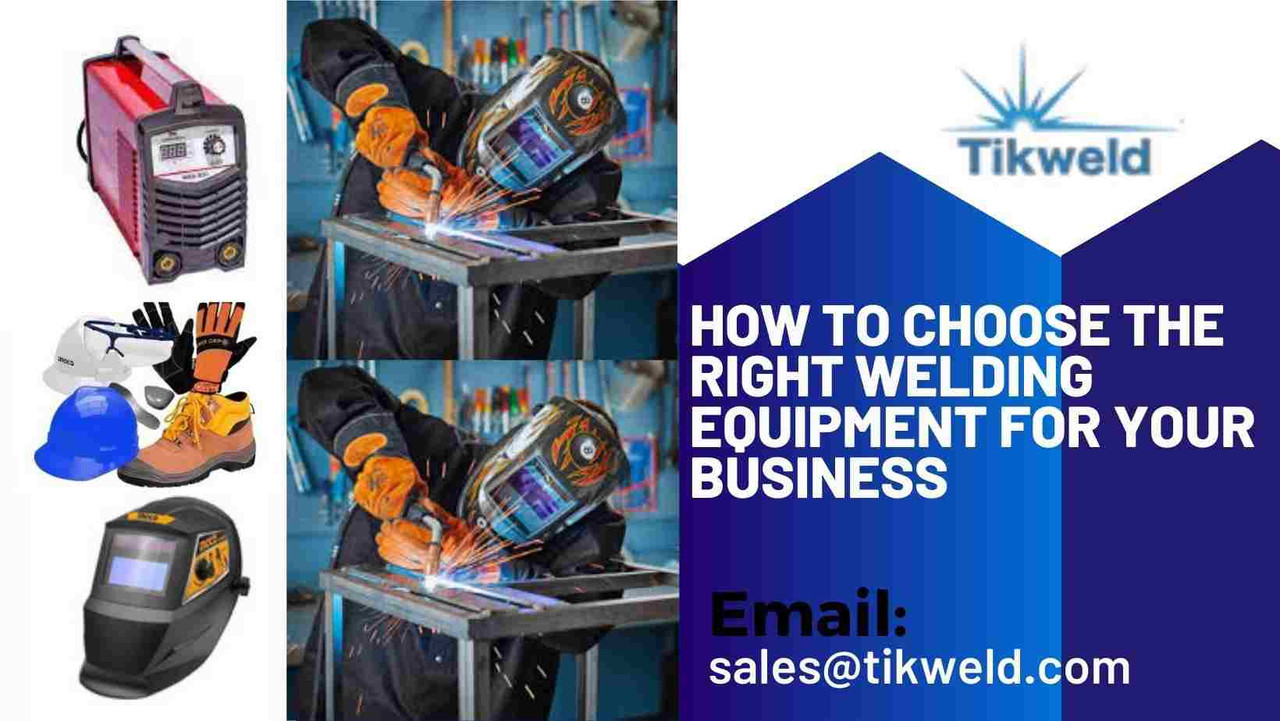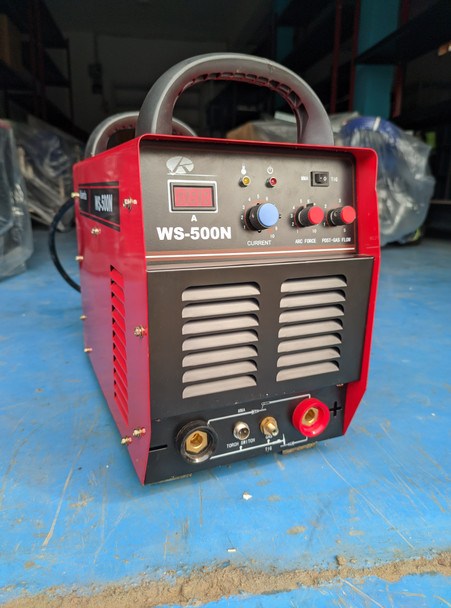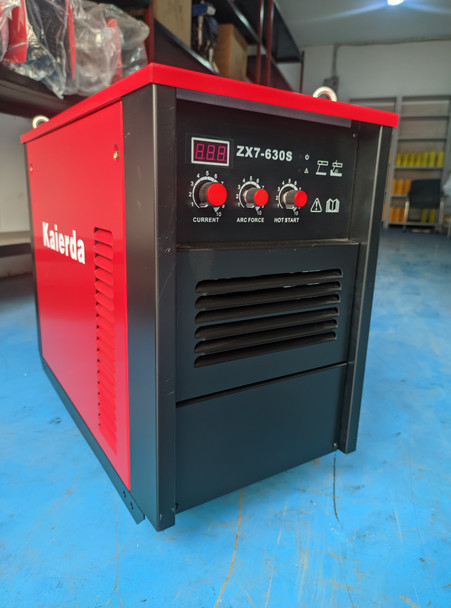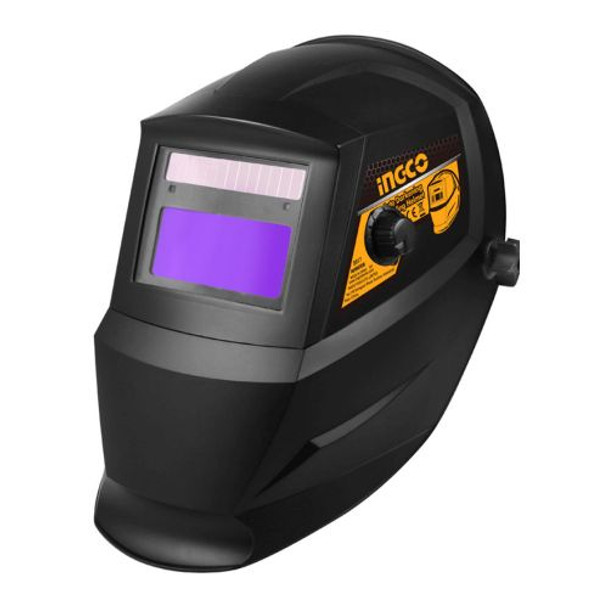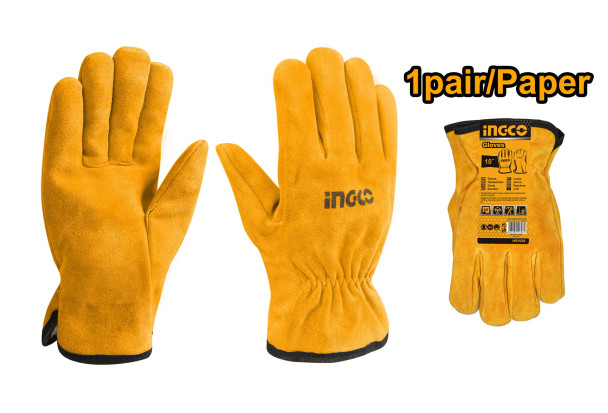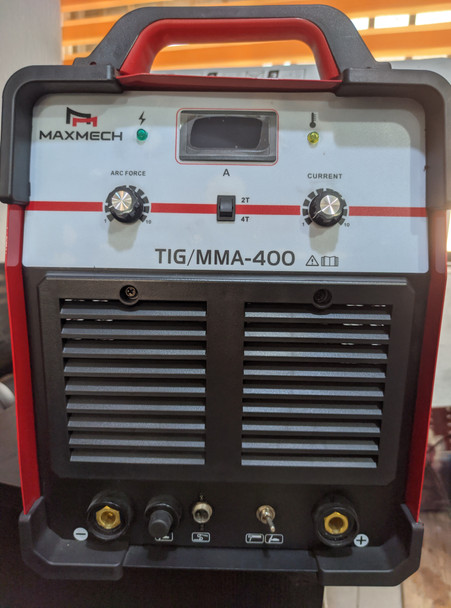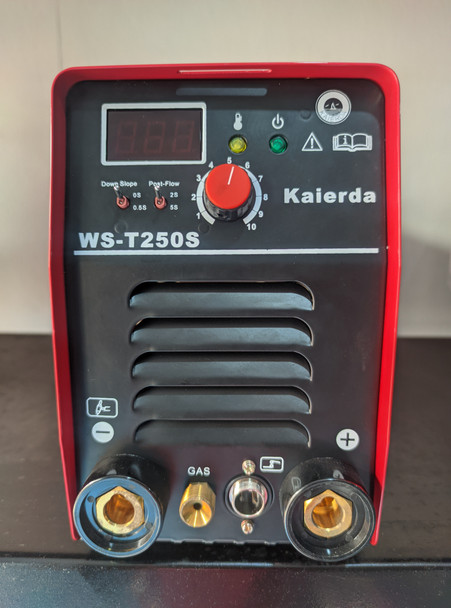How to Choose the Right Welding Equipment for Your Business
In metalworking and fabrication field, the importance of selecting the right welding equipment is paramount as it influences the efficiency, precision, and safety of welding operations hinge on the quality and suitability of the equipment employed. Businesses must navigate through a myriad of options to ensure they invest in welding machinery that aligns with their specific needs and objectives.
Kaierda Tig Welding machine WS500N
One crucial tip when selecting welding equipment for your business is to thoroughly assess your specific welding needs and objectives. Consider the types of materials you will be working with, the thickness of the metal, the desired welding processes (such as MIG, TIG, or stick welding), and the anticipated frequency and volume of welding tasks. By understanding your business's requirements, you can narrow down the options and prioritize features that are essential for achieving optimal results. Additionally, factor in considerations such as portability, power source compatibility, ease of use, and long-term maintenance requirements. Taking a tailored approach to equipment selection ensures that you invest in welding machinery that enhances productivity, efficiency, and overall business success.
This guide serves as a compass in the complex landscape of welding equipment selection, offering businesses a comprehensive overview of key factors to consider and guiding principles to follow. From understanding business requirements to evaluating features and specifications, this guide equips decision-makers with the knowledge needed to make informed choices when acquiring welding equipment.
You may also like: Comparing Welding Equipment Brands: Which One Is Right for You?
Understanding Your Business Needs when choosing the right welding equipment
Selecting the right welding equipment is crucial for the efficiency and success of your operations. To make an informed decision, consider the following aspects:
1. Assessing the Types of Welding Projects Your Business Handles
Evaluate the variety of welding projects your company undertakes. Different projects may require distinct types of welds, such as MIG, TIG, or stick welding. Understanding the materials you work with, such as aluminum, steel, or exotic metals, will also guide your equipment choice. Consider the thickness and type of metals involved, as well as the complexity of the joint designs. For instance, if you’re working with stainless steel or aluminum, TIG welding machines offer the precision required for these materials. On the other hand, MIG welders might be more suitable for a variety of other metals, especially for high-volume production due to their ease of use and speed. Also, if your business frequently engages in projects with diverse materials or intricate welding patterns, a versatile welding machine that supports various welding processes should be your go to.
2. Determining the Frequency and Volume of Welding Tasks
Consider how often welding tasks occur and the volume of work your business handles. The frequency and volume of welding tasks directly impact the type and capacity of welding equipment needed. For businesses with high welding demand, investing in robust, high-duty cycle machines is imperative to ensure efficiency and longevity. Conversely, businesses with intermittent welding needs may find cost-effective, smaller machines more suitable. Evaluating your welding workload helps strike the right balance between investing in equipment that can handle your workload effectively without unnecessary overspending.
3. Identifying the Specific Welding Processes Required
Different welding processes cater to distinct project requirements. Identify the welding techniques commonly employed in your business, whether it's Stick welding, MIG welding, TIG welding, or others. Each process has its strengths and limitations, and the choice depends on factors such as material type, thickness, and desired weld quality. Each welding process has its own merits. MIG is known for its speed and ease, making it ideal for beginners and large projects. TIG offers greater control for precision work on thinner materials. Stick welding is robust for outdoor or heavy-duty repair work. Match the equipment to the most common processes in your workflow, and consider machines that offer multi-process capabilities for greater versatility. By pinpointing the specific welding processes essential to your operations, you can narrow down your equipment options, ensuring they align seamlessly with your business's technical demands
Kaierda inverter manual arc welding machine ZX7-630S
Types of Welding Equipment
The right welding equipment can make all the difference in the execution and outcome of your projects. Here’s an overview:
- MIG Welders (Metal Inert Gas): Versatile and easy to learn, MIG welders are great for beginners and are commonly used for home repair and DIY projects. They are suitable for welding different materials, especially thick metals.
- TIG Welders (Tungsten Inert Gas): Offering high precision, TIG welders are perfect for detailed work and are often used in automotive and artistic applications. They use a non-consumable tungsten electrode and are perfect for creating clean and precise welds on materials like stainless steel and aluminum.
- Stick Welders: Rugged and effective, stick welders use a consumable electrode coated in flux, producing strong and durable welds. They are ideal for outdoor use and in situations where it’s not practical to use gas tanks. Stick welders can handle various metals, making them a reliable choice for construction and maintenance projects.
- Flux-Cored Arc Welding (FCAW): This type of welding is similar to MIG but doesn’t require a shielding gas, making it suitable for windy conditions. FCAW is known for its high deposition rates, making it efficient for large-scale projects.
- Plasma Cutters: While not welders, plasma cutters are essential for cutting through various metals quickly and precisely. These machines use a high-velocity jet of ionized gas to cut through electrically conductive materials. Plasma cutting is valued for its precision and ability to cut through thick metals.
Understanding Auxiliary Equipment
In addition to welding machines, a range of auxiliary equipment is essential for safe and efficient welding:
- Welding Helmets: Protect your eyes and face from sparks and harmful light with a good quality welding helmet, preferably with auto-darkening features, as they automatically adjust the shade of the lens to the welding arc's brightness, providing both safety and convenience..
- Gloves: Welding gloves are designed to protect your hands from heat, sparks, and sharp edges. They are typically made from flame-resistant materials and come in various designs, catering to different welding processes.
- Safety Gear: Safety gear includes protective clothing, such as safety glasses, fire-resistant clothing, and ear protection which are crucial to ensure a safe welding environment. Additionally, respiratory protection may be necessary, depending on the materials being welded.
- Welding Tables and Fixtures: These assistive tools provide a stable platform for welding workpieces. They come with clamps and fixtures to hold materials securely, ensuring precise and stable welding.
- Welding Curtains: Used to contain sparks and UV radiation within the welding area.
Auto Darkening Welding Helmet INGCO AHM008
Factors to Consider When Choosing Welding Equipment
When selecting welding equipment, it’s essential to weigh several factors to ensure you’re making a choice that aligns with your business needs and goals. Here’s a detailed look at several key factors:
- Budget constraints and cost-effectiveness
- Initial Investment:
- Consider your budget constraints when selecting welding equipment. Different welding machines come with varying price tags based on their features and capabilities. It's essential to strike a balance between your budget and the functionality required for your business.
- Operating Costs:
- Evaluate the long-term costs associated with the welding equipment, including consumables, energy consumption, and maintenance. Opt for equipment that not only fits your initial budget but also proves cost-effective over its lifespan.
- Power requirements and compatibility with existing infrastructure
- Power Supply:
- Ensure that the welding equipment's power requirements align with your facility's power supply. Some machines may require higher voltage or three-phase power, necessitating additional infrastructure adjustments.
- Compatibility:
- Check the compatibility of the welding equipment with your existing infrastructure, such as ventilation systems and electrical circuits. Upgrading infrastructure to meet the equipment's needs should be factored into the decision-making process.
- Portability and space constraints
- Portability:
- Consider the mobility requirements of your welding projects. If your business involves on-site welding or frequent repositioning of equipment, opt for portable machines that are easy to transport.
- Space Considerations:
- Assess the available workspace and ensure the selected welding equipment fits comfortably. Compact, space-efficient designs may be preferable for businesses with limited shop space.
- Ease of use and operator proficiency
- User-Friendly Features:
- Choose welding equipment with intuitive controls and user-friendly features. This ensures that operators, regardless of experience level, can quickly adapt to the equipment.
- Training Requirements:
- Evaluate the training needed for operators to use the equipment effectively. If your team includes both experienced and novice welders, selecting equipment that accommodates varying skill levels can streamline operations.
- Warranty, support, and maintenance services
- Examine the warranty offered by the manufacturer. A comprehensive warranty reflects the manufacturer's confidence in the equipment's durability. It also provides protection against unexpected issues.Assess the availability of support and maintenance services. A reliable manufacturer should offer technical support, spare parts availability, and maintenance services to address any issues promptly. This ensures minimal downtime and optimal performance.
Welding Leather gloves - INGCO HGVW02
Evaluating Features and Specifications of welding equipment
When selecting welding equipment, understanding its features and specifications is key to ensuring it meets your project demands:
1. Duty Cycle and Welding Capacity: The duty cycle of a welding machine indicates the amount of time it can operate without overheating. For example, a 60% duty cycle means it can weld for 6 minutes out of a 10-minute period. Welding capacity refers to the thickness of material the machine can handle effectively.
2. Voltage, Amperage, and Power Settings: Voltage and amperage are critical for determining the welding machine’s capability in terms of the heat and penetration of the weld.. Ensure the machine offers a range of settings to handle various materials and thicknesses. Power settings on the other hand, should be adjustable to accommodate different welding techniques and outcomes. Machines with multiple power settings allow you to control heat input, enabling precise welding on different materials and thicknesses.
3. Welding Speed and Efficiency: Welding speed is important for project turnaround times. Look for equipment that maintains a consistent welding speed without sacrificing the quality of the welds. When it comes to efficiency, consider features that enhance overall efficiency, such as quick setup, fast arc initiation, and consistent arc stability. Efficient machines contribute to increased productivity and reduced downtime.
4. Additional Features: Modern welding machines come with features that enhance usability such as...
- Digital Displays: Provides precise control and monitoring of settings. This feature enhances accuracy and ease of use, especially when fine adjustments are necessary.
- Pre-set Programs: These programs simplify the setup process, making it easier for operators to achieve optimal results without extensive manual adjustments.
- Pulse Welding: Modulates the welding current, allowing for better control of heat input. This is particularly useful for thin materials and helps reduce the risk of distortion.
- Synergic Control: Automatically adjust welding parameters based on the chosen welding wire and material thickness. This feature streamlines the welding process, especially for less experienced operators.
- Auto-Set Controls: Automatically adjust settings based on the material and wire thickness.
- Thermal Overload Protection: To prevent machine damage from overheating.
Maxmech Inverter Welding Machine TIG/MMA 400
Researching Brands and Suppliers of welding equipment
Choosing the right brand and supplier is as important as selecting the equipment itself. Here’s how to conduct thorough research:
Reviewing customer feedback and testimonials
- Online Reviews:
- Explore online platforms, forums, and review sites where customers share their experiences with specific welding equipment brands and suppliers. Pay attention to recurring themes in the feedback to gauge the overall satisfaction and potential issues.
- Testimonials:
- Check for official testimonials on the manufacturer's or supplier's website. These testimonials often highlight positive experiences and success stories with their products and services.
- Industry Forums and Communities:
- Engage with welding-specific forums and online communities where professionals share insights and experiences. This provides a more in-depth understanding of how certain brands and suppliers perform in real-world welding scenarios.
Comparing warranties, support, and after-sales services
- Warranty Terms:
- Thoroughly review the warranty policies offered by different brands. Consider the duration of the warranty, what it covers, and any conditions or limitations. A comprehensive warranty is indicative of a manufacturer's confidence in the durability of their equipment.
- Support Services:
- Evaluate the availability and responsiveness of customer support services. Look for brands that offer accessible technical support, whether through phone, email, or online chat. A responsive support team can be crucial for addressing any issues that may arise during equipment use.
- After-sales Services:
- Assess additional after-sales services provided by the manufacturer or supplier. This may include training programs, maintenance services, and access to replacement parts. A commitment to comprehensive after-sales support indicates a company's dedication to customer satisfaction beyond the initial purchase.
Assessing the reputation and reliability of manufacturers and suppliers
- Company History:
- Research the history of the manufacturer or supplier. Established companies with a long track record in the welding industry often have a reputation for producing reliable and high-quality equipment.
- Industry Certifications:
- Check if the manufacturer holds relevant industry certifications and adheres to quality standards. Certifications such as ISO 9001 can be indicative of a commitment to maintaining high manufacturing standards.
- Referrals and Recommendations:
- Seek referrals and recommendations from industry peers, colleagues, or welding professionals. Personal endorsements can provide valuable insights into the reliability and performance of specific brands and suppliers.
- Industry Presence:
- A strong presence in the welding industry, participation in trade shows, and collaborations with reputable organizations can be indicators of a manufacturer's commitment to the field.
By thoroughly researching brands and suppliers through customer feedback, warranty considerations, and an assessment of reputation and reliability, you can make an informed decision when selecting welding equipment. This ensures a positive and lasting partnership with a reliable provider, enhancing the overall success of your welding operations.
Kaierda Inverter TIG/MMA Welding Machine WS-T250S
Making the Final Decision
When it’s time to make the final decision on welding equipment, here’s a structured approach to ensure you’re making a well-informed choice:
- After evaluating your needs and the available options, narrow down your choices to a few that best fit your business requirements and budget. This focused list should reflect the equipment that meets your specifications and falls within your financial constraints.
- With your shortlist in hand, request detailed quotes from suppliers. Compare these quotes not just on price, but also on value, consider warranty, service agreements, and any included training or support. Don’t hesitate to negotiate terms to find the best deal for your business.
- Think beyond the immediate needs. Choose equipment that can grow with your business, considering future projects and potential expansions. Equipment that can adapt to new technologies or processes will serve you better in the long run.
- Once you’ve made your choice, proceed with the purchase. Ensure you understand the delivery schedule and installation requirements. If the equipment is complex, arrange for professional installation and training for your team to ensure a smooth transition.
This process will help you make a decision that not only meets your current welding needs but also positions your business for future success.
99% of readers also like:
Are you buying a welding machine for the first time
Essential Welding Equipment for Beginners: A Comprehensive Guide
How to Maintain and Care for Your Welding Equipment
Conclusion
In the journey to select the right welding equipment for your business, the path is marked by several critical considerations. From understanding your business needs, evaluating the types of equipment, and considering various factors such as budget and power requirements, to researching brands and making the final decision, each step is pivotal in guiding you to the ideal choice. Be sure to:
- Assess the types of welding projects and the frequency of tasks.
- Understand the different types of welding machines and auxiliary equipment.
- Consider factors like budget, power needs, portability, ease of use, and support services.
- Evaluate features like duty cycle, power settings, and additional functionalities.
- Research brands and suppliers thoroughly, focusing on customer feedback and service quality.
- Finally, Make your decision with a long-term perspective, considering growth potential and investment value.
Investing in quality welding equipment is not merely a purchase; it’s an investment in your business’s future. High-quality tools enhance productivity, ensure safety, and produce superior work that stands the test of time. They can also adapt to the evolving demands of your business, providing a foundation for growth and success. If you have any questions or enquiries feel free to Contact Us Today.

